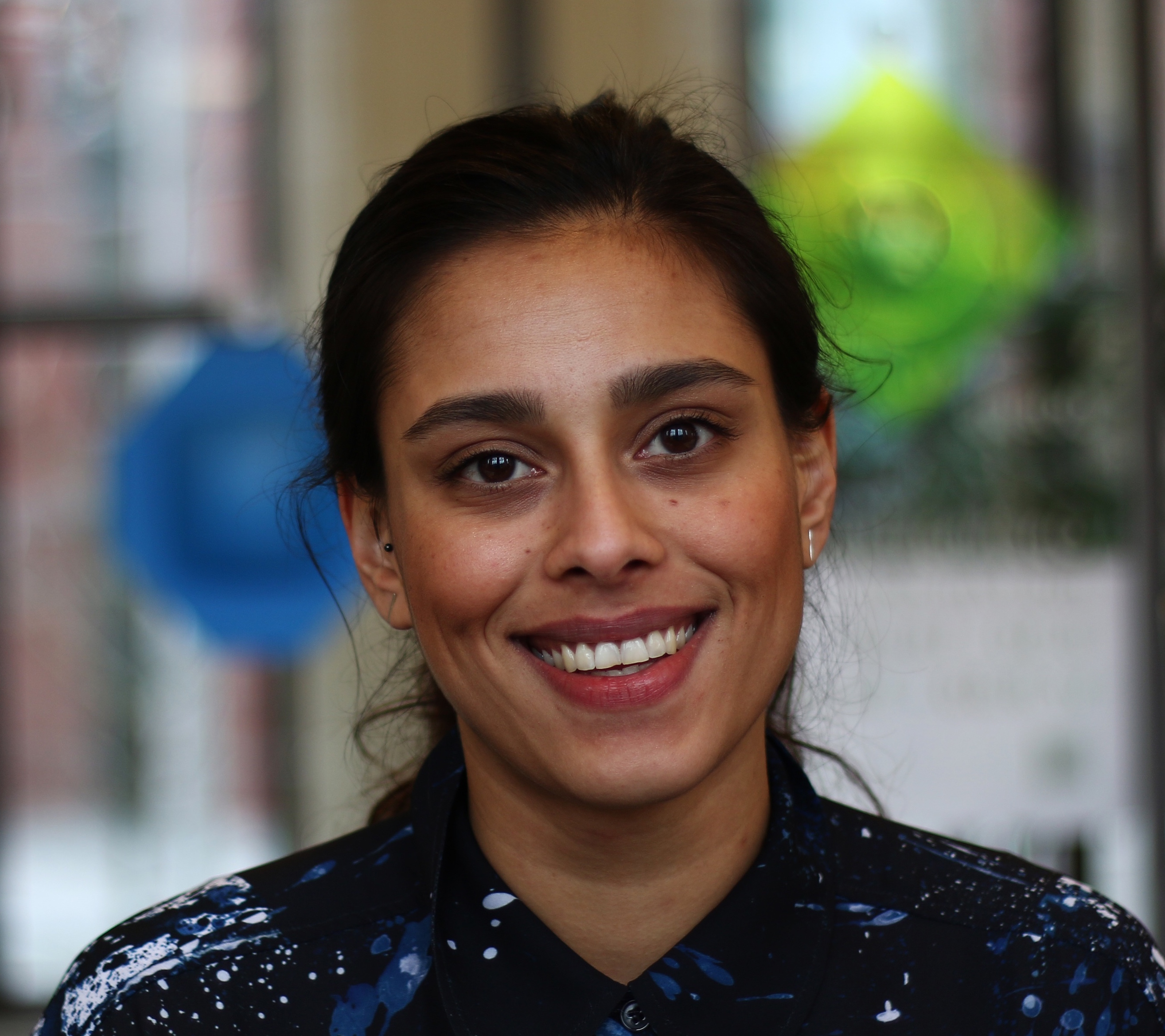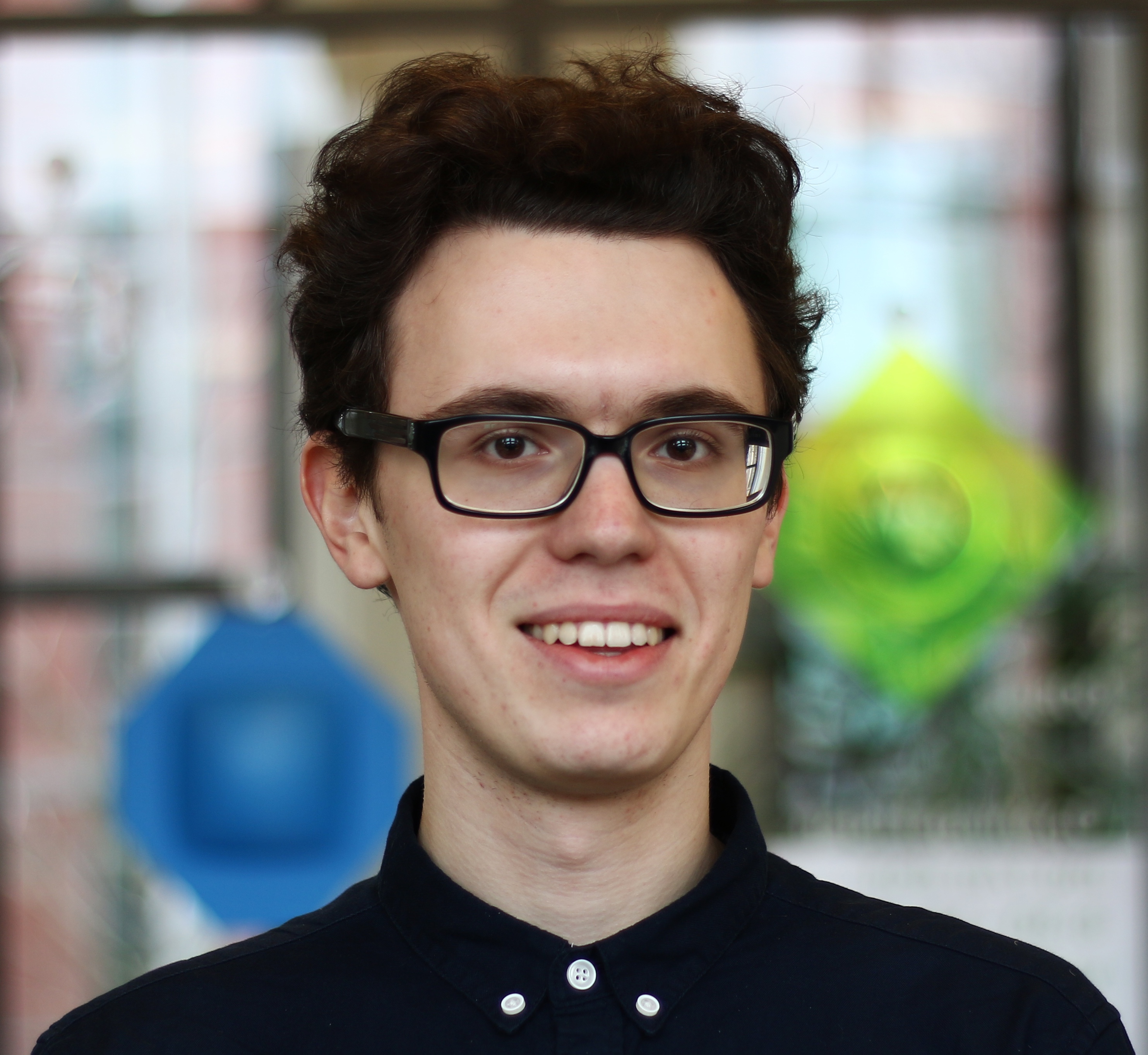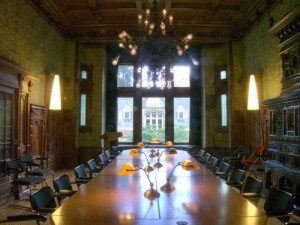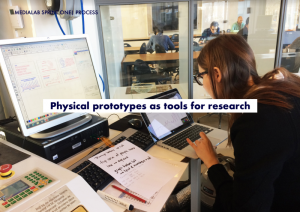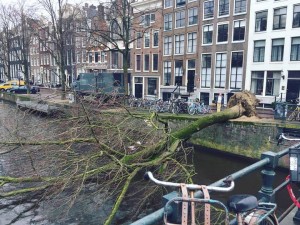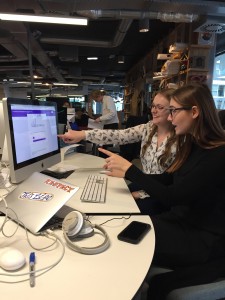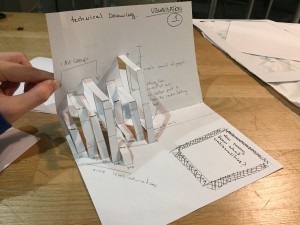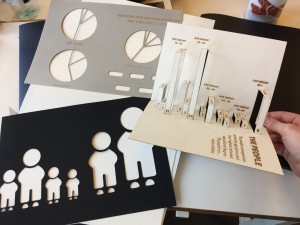Three weeks flew by and our first sprint is now complete. Although it took some time to master the advanced design tools and methods of MediaLAB and find our footing and direction for the project, in the end we came out more prepared, experienced and inspired.
Sprint Goal
First things first, we had a meeting with our clients – coordinators of the European Holocaust Research Infrastructure – in the building of NIOD Institute for War, Holocaust and Genocide Studies.
The building, constructed for a tobacco trader Jacobus Nienhuys in the 1880s, has since accommodated the Deutsche Bank, a tribunal on Nazi collaborators, the Agency of the Ministry of Finance and presently NIOD, since 1997. With virtually every room made in a different style ranging from French Renaissance to Moorish, the building seems to match the mission statement of EHRI: bringing separate archives and institutions together.
After some deliberation we came up with a sprint goal – conducting an interactive survey amongst different age groups to test their curiosity and knowledge of the Holocaust in order to define a target audience. We decided to present our results as a tangible visualization.
Makerssprint
To get everyone in the mindset of creating and building, next week we had a Makerssprint, which took place at the Makerslab at the Amsterdam University of Applied Sciences. The idea was to actually come up with and create some prototypes for our project using an array of tools ranging from laser cutters and 3D printers to disc sanders, saws and hammers. Over the course of three days our team has managed to build three tools that we intended to use in further research.
- Interactive survey
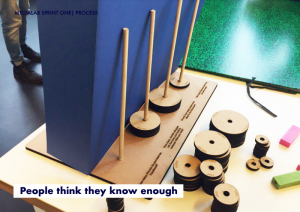 Participants were asked to make their estimates on the numbers of victims of the Holocaust, refugees and remaining survivors by placing the appropriate amount of disks representing numbers of people on poles. After that real numbers were revealed. By asking people factual questions about the Holocaust, we hoped to spark curiosity through making people aware they might not know some crucial facts.
Participants were asked to make their estimates on the numbers of victims of the Holocaust, refugees and remaining survivors by placing the appropriate amount of disks representing numbers of people on poles. After that real numbers were revealed. By asking people factual questions about the Holocaust, we hoped to spark curiosity through making people aware they might not know some crucial facts.
- Jenga tower
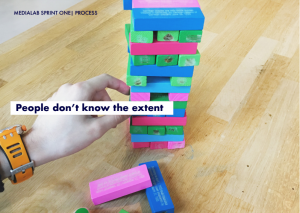 Inspired by a memorial in the Bavarian Quarter of Berlin, each block of a jenga tower had an anti-Semitic law written on it. Pulling out block after block, a player would learn the extent of the dehumanization of the Jewish population. The eventual collapse of the tower was also meant to be symbolic.
Inspired by a memorial in the Bavarian Quarter of Berlin, each block of a jenga tower had an anti-Semitic law written on it. Pulling out block after block, a player would learn the extent of the dehumanization of the Jewish population. The eventual collapse of the tower was also meant to be symbolic.
- Then and now
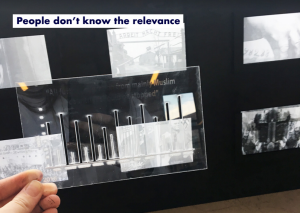 By matching modern-day events with those of less than a century ago, the participants were meant to draw parallels and grasp the relevance of continuous learning of the history of the Holocaust.
By matching modern-day events with those of less than a century ago, the participants were meant to draw parallels and grasp the relevance of continuous learning of the history of the Holocaust.
By using three disparate approaches – a survey, a game and an interactive installation – we tested various ways of engaging people with Holocaust related content, and the feedback and observations that we gathered will be valuable in our future work.
Workshop – Define Intentions
Another valuable experience of the same week was a workshop on defining intentions. We were asked to think of all potential stakeholders of our project and look at the problem from each point of view.
Survey Conducting and Weather Shenanigans
Inspired and prepared, we were ready to hit the streets and talk to people. However, the weather had other plans, a powerful storm hit Amsterdam on the day that we scheduled the survey for. Understanding that no one would be willing to talk to us in the pouring rain and strong wind, we switched to our contingency plan and made an online version of the questionnaire. We spread it on Facebook, not only throughout our friends and acquaintances, but also around groups targeted at different age groups, such as “Mothers of Amsterdam” and so forth. The result was quite fruitful, and we managed to get responses of almost eighty people rather quickly.
Processing Responses and Making it Tangible
One of the big realizations of this week was learning that processing responses is actually more valuable and time-consuming than actually getting them. Fortunately, through careful color-coding, categorizing and charting we managed to pull through in time. To visualize our results in a creative and impressive way, we decided to create a pop-up book. Each page had a unique representation of the answers to a question of the survey. Based on the answers, we managed to trace some interesting patterns and pin-point some groups that would be productive to target. We did not treat these results as facts, but rather interesting assumptions and a good place to start.
After All
At the sprint review, EHRI was quite impressed with our results and we discussed our insights at length. The research that we had done was conversation provoking and together we managed to define goals and intentions for the sprint to come. Thus, the first sprint was completed, and now we are ready to face new challenges.



